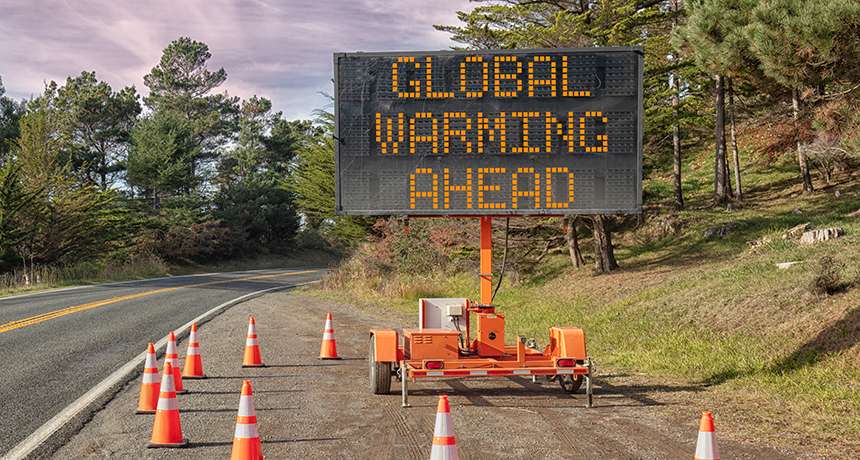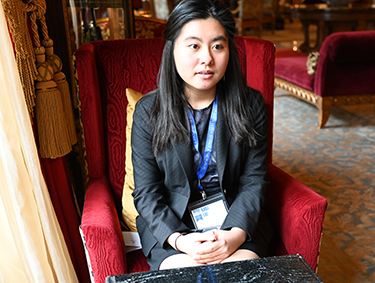These teens have some ideas for stopping climate change
Regeneron Science Talent Search finalists share their ideas for halting climate change in its tracks

If you could do one thing to stop climate change, what would it be?
Bill Oxford/iStock/Getty Images Plus
WASHINGTON, D.C. — Climate change can be overwhelming. Over the past 250 years, human activities have warmed the planet’s surface, changed weather patterns and even made the oceans more acidic. Halting or slowing down these changes requires that people stop putting greenhouse gases into the atmosphere in high amounts. The problem is too large for any one person to fix. But what if you could? What if you suddenly had the power to do one thing to stop climate change? What would you do with this huge responsibility?
The Regeneron Science Talent Search is full of minds that are up for this challenge. Winning the Science Talent Search, after all, isn’t just about who’s got a good science fair project. The finalists are challenged to think like a scientist and take on big problems. Like climate change. We asked some of this year’s finalists what one thing they would try if they had the infinite power to fight climate change.
Going green

If he could do one thing to stop climate change right now, Daniel Schäffer, 17, would start planting. Daniel is a senior at Montgomery Blair High School in Silver Spring, Md. Plants take up CO2 from the atmosphere and store that carbon in their trunks, stems and leaves, so the more plants, the less CO2 to worry about. “I’d stop deforestation and plant a ton of trees,” he says. “It’s not the quickest, but it’s sustainable.” Plus, it doesn’t force people to change their behaviors.
“Plant more trees anywhere there’s space,” agrees Kaili Liu, 17. The senior at Ravenwood High School in Brentwood, Tenn., wants to put plants on buildings, too, she says. She advocates creating more green roofs — covering roofs with gardens and greenery. “Green roofs and trees will help decrease CO2 emissions,” she says.
Catching carbon
Plants can suck CO2 out of the air, but people can also develop technologies to do this, notes Rachel Seevers, 17. Rachel is a senior at Paul Laurence Dunbar High School in Lexington, Ky. These technologies could trap carbon as it is produced from fossil fuel plants, she says, or even suck it directly out of the air. “You can take emissions and recapture them and reuse them … take it out of the air and use it for good.”
If you want to force people to change, says Kevin Chengming Qian, 18, hit them where it counts — their wallets. The senior at Montgomery Blair High School would “assign values to each thing that’s harmful [to the climate], and when each person does that, I’d tax them.” You get charged extra, he says, if it’s clear you don’t care about climate.
Hit them where it counts
Emma Montgomery, 18, says she would attack companies instead of people. “One thing I get upset by in terms of climate change is how there’s a big focus on what the individual can do,” the senior at Ossining High School in New York says. “In reality, it’s the corporations that are contributing the most” to climate change. She wants heavy restrictions on companies that produce too much carbon dioxide.
The government could also work together with businesses to limit the burning of fossil fuels, says Preeti Sai Krishnamani, 17. She’s a senior at the Charter School of Wilmington in Delaware. “I’d want them to work together for green innovation and to reinvent their products,” she says. “The only way you can influence people is to change the products they are using.”
Some people in the U.S. government are starting this approach, notes Brent Perlman, 17. “I would try and pass the Green New Deal,” says the senior at Byram Hills High School in Armonk, N.Y. The Green New Deal is a proposed government program to promote renewable energy and energy efficiency. “I think it’s important to incentivize people to transition away from gas,” he says. “I know a tax on gas is very unpopular, but I do think we need to make sacrifices now to preserve the health of our environment for future generations.”
While we’re making big changes, says Amol Singh, 18, let’s go worldwide. “I would impose a carbon tax on all countries,” says the senior at Lynbrook High School in San Jose, Calif. “The money would be used to reduce the effects of climate change.”
When you believe
It’s time to change the way the public thinks about climate change, says Chirag Kumar, 17. People need to realize that climate change is already having impacts, says the senior at Horace Greeley High School in Chappaqua, N.Y. “It’s not only about tomorrow getting warmer,” he notes. “It’s about extreme weather events, like the polar vortex and extreme heat waves. It’s a problem that will change how we live our lives.”
Laws and taxes can make people change. But people might change on their own if they believe the problem is worth working on. That’s why Ana Humphrey, 18, wants to educate people. “It’s such a big challenge; we need to collaborate,” says the senior at T.C. Williams High School in Alexandria, Va. “If we could get everyone on the same page, I think we would figure it out. These are issues that impact all of us.” Perhaps the most important key to climate change, then, is getting everyone to understand that’s is a problem that needs solving.
(The Regeneron Science Talent Search is run by Society for Science & the Public and funded by Regeneron. Society for Science & the Public also publishes Science News for Students. Regeneron is a company that develops treatments for diseases such as cancer.)







